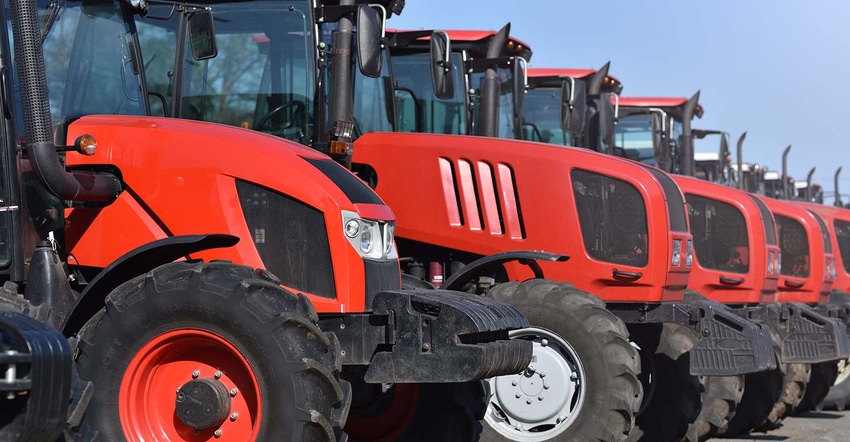October 4, 2021

The U.S. economy has been on a bit of a roll. Oxford Economics' Recovery Tracker, which factors in things like demand, production, employment and public health, posted its 18th consecutive weekly gain at the end of June.
The growth has been broad-based, too. Toward the end of June, 44 states posted a weekly increase, and all five regions posted a synchronized gain.
“Looking at Q3 onward, we are expecting the path of GDP to remain consistently above its pre-virus path,” says Chloe Parkins, senior economist at Oxford Economics.
The Canadian market is recovering similarly. Canada’s economy just returned to pre-pandemic levels for the first time in June. According to Parkins, strong consumer sentiment and excess savings are playing a big factor in the recovery.
Consumer savings is a big factor in the U.S. recovery, as well. Parkins pointed to even more reasons for the positive economic outlook:
Improving health situation (though still some uncertainty)
Private sector business optimism bolstered by fiscal stimulus
Strong corporate profits
Strong consumer demand
With respect to improving business confidence, Parkins cited two key manufacturing indices: The Philly Fed Index and ISM Manufacturing Index. Both show that manufacturing has maintained a steady course in July despite a modest dip from the previous month.
“Although supply side challenges are constraining growth, they are not fully derailing it,” said Parkins.
Agriculture and construction equipment manufacturers are particularly upbeat. Results from the Association of Equipment Manufacturers’ Q2 member survey were just as strong as the first quarter.
“Member perceptions showed a bit more stability in some spots and perhaps a slight decline in other areas of our industries, but overall, they showed great progress,” says Benjamin Duyck, AEM director of market intelligence.
Ag equipment expectations
Agriculture equipment manufacturers aren’t concerned about the recovery being thrown off track. Roughly 76% of the Q2 survey respondents reported growth compared to the previous quarter. An even stronger 87% reported growth compared to the previous year. Looking forward, 90% think growth will continue for the next 12 months.
While most AEM members expect growth to continue, the general consensus is that the rate of growth will slow a bit. In looking at the total of all ag equipment categories, 6-10% growth is expected over the next 12 months, whereas 11-15% growth was experienced over the past year.
Here’s a closer look at the individual ag equipment categories:
Trailers and transportation equipment grew more than 20% (16-20% expected)
Components grew 16-20% (11-15% expected)
Equipment for working soil, seeding, fertilizing and plant protecting grew 16-20% (6-10% expected)
Loaders and material handlers grew 11-15% (6-10% expected)
Tractors grew 11-15% (6-10% expected)
Harvesting equipment grew 11-15% (11-15% expected)
Lawn and garden equipment grew 11-15% (stability expected)
Irrigation and sprayers grew 6-10% (1-5% expected)
Livestock equipment grew 6-10% (1-5% expected)
Even while enjoying this widespread growth, agriculture equipment manufacturers are facing some challenges. Finding skilled labor is the biggest. Keeping up with demand has also been daunting. More than half of survey respondents said inventory levels have declined mid-year, and roughly 60% now report levels that are too low.
“While production has been up, I feel this can cause issues as the backlog is getting bigger, as well,” Duyck explains.
While much remains to be seen as to which economic scenario ultimately plays out over the next several months, the agriculture equipment industry has a few things working in its favor.
Farm income and capital spending have each risen sharply since mid-2020. Each have moderated to some degree, and income is now surpassing capital spending.
Healthy farm incomes are being fueled by healthy farm prices. “The 2021 prices farmers have been seeing are the highest since around 2014-15,” Parkins points out.
U.S. market remains strong
The U.S. market has been a real hotspot for ag machinery activity, particularly when compared to other developed countries.
United States: 27% growth this year, 3% next year
Japan: 5% this year, 2.8% next year
United Kingdom:3% this year, 6.3% next year
Eurozone: 1% this year, 4.1% next year
It’s equally important to look at what has been happening in emerging markets:
Brazil: 4% growth this year, 3.3% next year
Russia: 9% this year, -2% next year
Eastern Europe: 8% this year, 8% next year
India: 1% this year, 4.1% next year
China: -41.5% this year, 26.9% next year
This year’s explosive growth in the U.S. has allowed ag equipment sales to reach their highest point since around 2012. “From 2022 onward, however, growth in the U.S. will begin to moderate,” Parkins points out. “That doesn’t reflect a change in sentiment, just a return to normal.”
Despite some serious headwinds, U.S. ag equipment manufacturers have held their own on the global stage, as well. High export prices have been a big challenge.
“The last few quarters have pretty much been flat with respect to trade,” Parkins says. “Trade prices are largely to blame because they rose sharply through 2020. But import prices have also been increasing at a steady pace, and they are now back up to where they were a few years ago. Export pricing continues to climb, though, and could be making U.S. manufacturers less competitive.”
Regardless, farm machinery and equipment has been leading the overall global ag machinery industry. Growth of 10% is expected this year followed by 0.8% in 2022. Conversely, lawn and garden equipment is contracting by 3.8% this year and another 0.5% next year.
Source: Association of Equipment Manufacturers, which is solely responsible for the information provided and is wholly owned by the source. Informa Business Media and all its subsidiaries are not responsible for any of the content contained in this information asset.
About the Author(s)
You May Also Like




